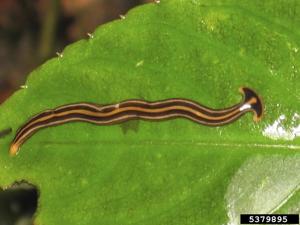Earthworms, as we know, are garden champions, cleaning the soil by eating their weight in organic matter every day and aerating it as they wriggle around, creating tunnels to ease root growth. They also improve soil moisture, remove fungal spores and stimulate microbial activity, which benefits plant health. But there’s another weird worm out there that’s toxic, deadly to our beloved earthworms and nearly impossible to kill: Allow me to introduce you to the hammerhead worm.
As its name would imply, the narrow, snakelike flatworm has a head built like that of a hammerhead shark. And it’s hardly a newcomer, believed to have hitched a ride to the U.S.
from Southeast Asia with a shipment of plants around 1900. Usually 2 to 3 inches in length with vertical stripes running the length of their bodies, the invertebrates can grow up to 15 inches long. And they’re a force to be reckoned with.
Although they are ravenous earthworm hunters, hammerheads are coated in the same paralytic neurotoxin present in pufferfish, which keeps birds and other insects from preying on them. This gives them a decisive advantage in in a neurotoxin that keeps birds and other insects from preying on them. This gives them a decisive advantage in the food chain.
That chemical coating is toxic to pets and would likely irritate your skin if you were to pick up a worm. To add insult to injury, their bodies contain parasitic nematodes, tiny roundworms that feed on plants and can parasitize humans, animals .

















